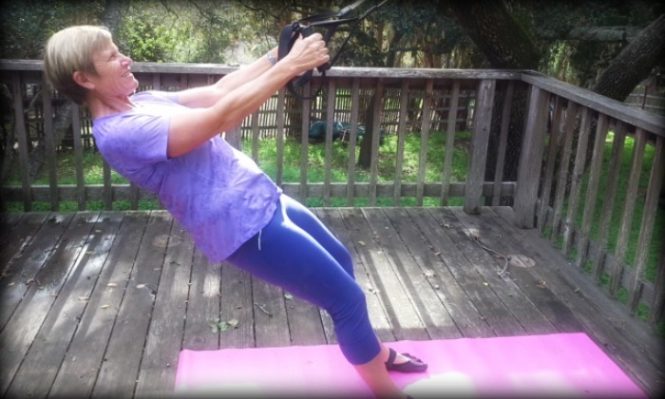

Building a bigger back is a common goal for many fitness enthusiasts. Whether you’re a seasoned lifter or just starting out, understanding effective pulling and rowing variations is key. This article explores the world of back exercises focusing on pulling and rowing variations, helping you develop a comprehensive approach to building a broader, stronger back. Many people struggle with proper form and effective exercise selection. This article will address common challenges and provide actionable solutions to build a more muscular and aesthetically pleasing back. The following sections will cover various pulling and rowing exercises, their benefits, and how to incorporate them into a well-rounded workout routine. We will also examine critical considerations like proper form and progressive overload.
Understanding the Fundamentals of Pulling and Rowing
Defining Pulling and Rowing
Pulling exercises involve pulling weight towards the body, typically using the back muscles as the prime movers. Examples include pull-ups, lat pulldowns, and various variations of rows. Rowing exercises, on the other hand, involve pulling weight in a rowing motion, also emphasizing back muscles, but often working other upper body and core muscles as well. This often involves pulling weight to the chest or waist. Mastering both pulling and rowing will maximize back development. Key to success is not just the exercises you choose but also proper technique. Pulling exercises emphasize horizontal and vertical movement while rowing emphasizes an angled approach.
The Importance of Proper Form
Maintaining proper form is paramount to prevent injuries and optimize muscle engagement. Incorrect form can lead to imbalances and unnecessary stress on joints and ligaments. Correct form ensures muscles are worked effectively and prevents you from getting hurt while you focus on results. In the next section, we explore a selection of various pull and row exercises for optimal results. Many people often miss the subtle nuances in form, so understanding the fundamentals is essential.
Exploring Diverse Pulling Exercises
Related Post : are dumbbells enough to build muscle
Pull-ups and Variations
Pull-ups are a classic exercise for building back strength. Variations like close-grip pull-ups and wide-grip pull-ups target different areas of the back. Close-grip pull-ups emphasize the lats, while wide-grip pull-ups target the rhomboids and trapezius muscles. Consistency is critical in mastering these exercises. Mastering the pull-up will require patience, as it requires building significant upper body strength.
Exploring Diverse Rowing Exercises
Barbell Rows
Barbell rows are a fundamental compound exercise that effectively targets the entire back. Barbell rows are great for building strength and size. They emphasize the erector spinae and rhomboids while engaging the forearms. They are an excellent addition to your workout routine for overall muscle growth.
Dumbbell Rows
Dumbbell rows offer greater versatility and allow for greater focus on one side at a time. This unilateral exercise helps to correct imbalances and strengthen individual muscles. This allows for specific adjustments in form and technique as required. Both barbell and dumbbell rows offer great results and are highly effective back exercises.
Incorporating Pulling and Rowing into a Workout Routine
Planning Your Back Workout
To get the most out of your back workouts, plan your routine to target both pulling and rowing exercises. Consider factors such as your current fitness level and your workout goals. Consistency is key in any workout routine. Building a strong back often requires consistency over time.
Progressive Overload
Progressive overload is crucial to continually challenge your muscles and promote growth. Over time, increase the weight, reps, or sets to continually challenge your muscles for better results. Progressive overload helps maximize your workout routine.
Advanced Strategies and Considerations
Addressing Common Issues
Common mistakes include improper form, insufficient rest between sets, and insufficient warm-up routines. Proper warm-up and consistent stretching is crucial to avoid injury and maintain flexibility. Pay attention to your body’s signals and take rest days when needed.
Nutrition and Recovery
Nutrition plays a pivotal role in muscle recovery and growth. Ensure you consume enough protein to support muscle repair and growth. Adequate rest is essential for allowing your muscles to recover and rebuild after a workout.
Additional Tips and Considerations
Advanced Techniques for Building a Bigger Back
Case Studies and Examples of Successful Training
Measuring Progress and Adapting Your Plan
This is a FAQ section. Here are some examples of what it may contain:
Q1: How many sets and reps should I do for pulling and rowing exercises?
A1: The optimal number of sets and reps depends on your fitness level and goals. Beginners may start with 2-3 sets of 8-12 reps, while more advanced lifters can progressively increase the weight, reps, or sets. Focus on proper form over high volume at first.
Q2: What are some common mistakes people make when performing pulling exercises?
A2: Common mistakes include not engaging the back muscles sufficiently, using momentum instead of controlled movements, and not maintaining a neutral spine. Always focus on maintaining a stable core to reduce stress on your lower back.
In conclusion, mastering pulling and rowing variations is crucial for building a bigger back. By incorporating these exercises into your routine and focusing on proper form, you can effectively stimulate muscle growth and achieve a more impressive physique. Remember consistency and progressive overload are key. Continuously challenge yourself by increasing the weight, reps, or sets over time to maximize results. If you’re looking to learn more about advanced back training techniques or need personalized guidance, consider consulting a certified fitness professional. They can tailor a program to your specific needs and goals. Ready to build a bigger back? Click here to discover more exercises and workout plans!